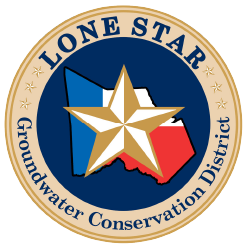
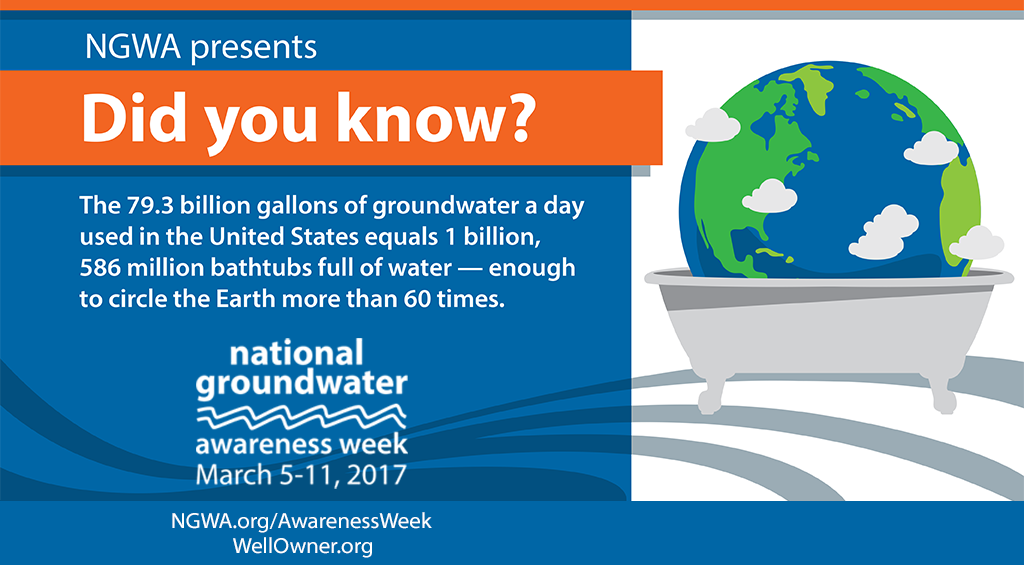
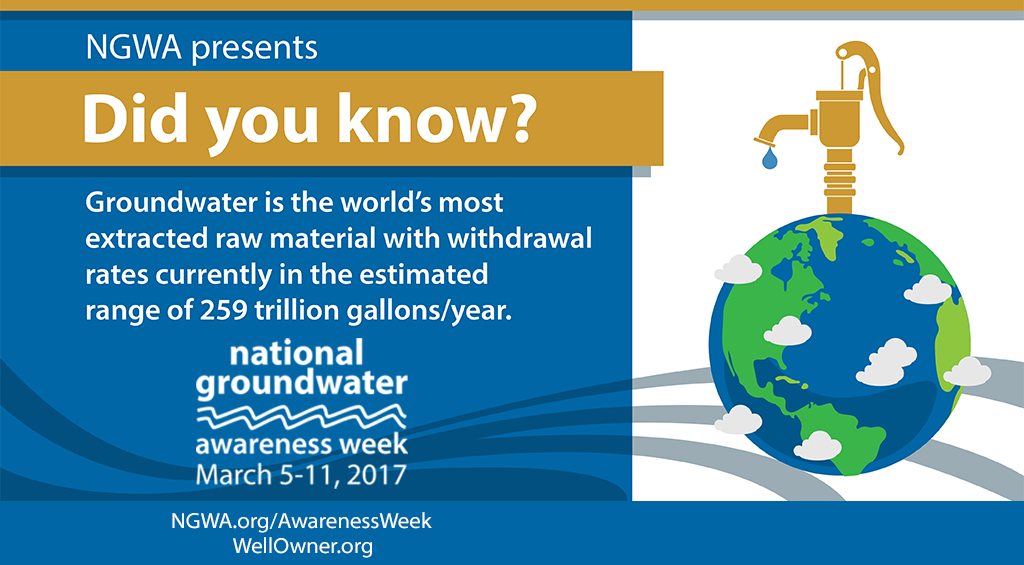

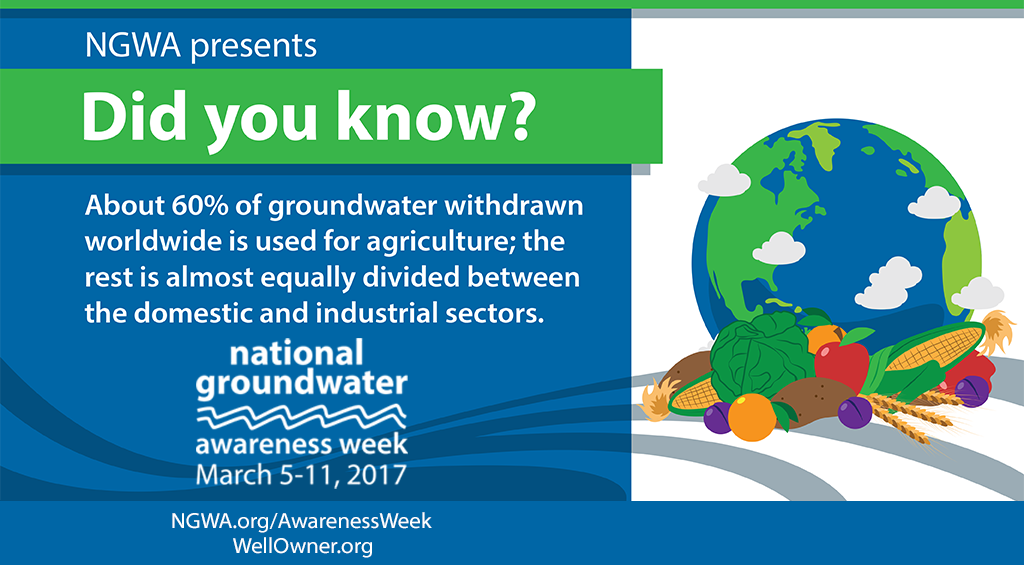
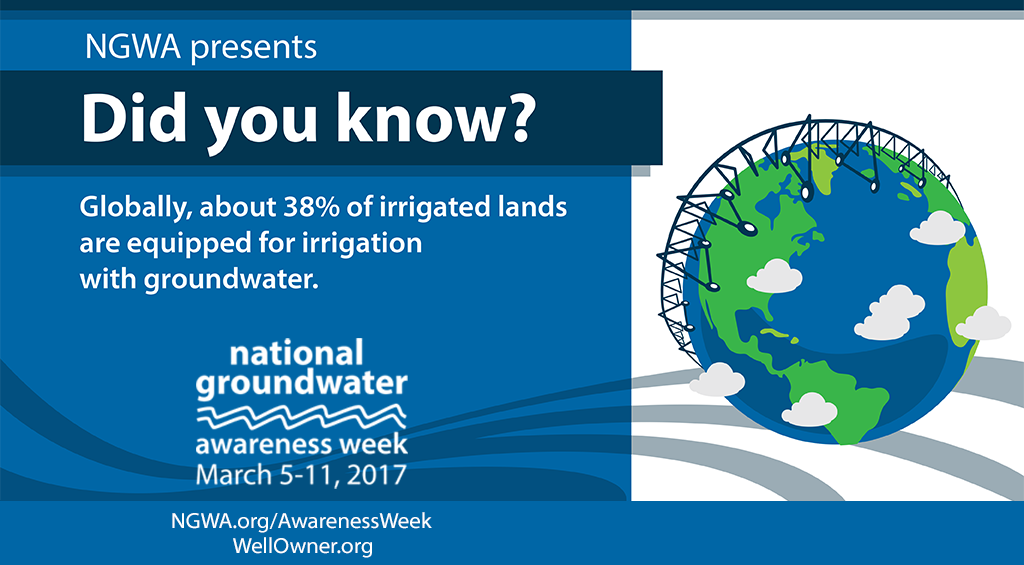
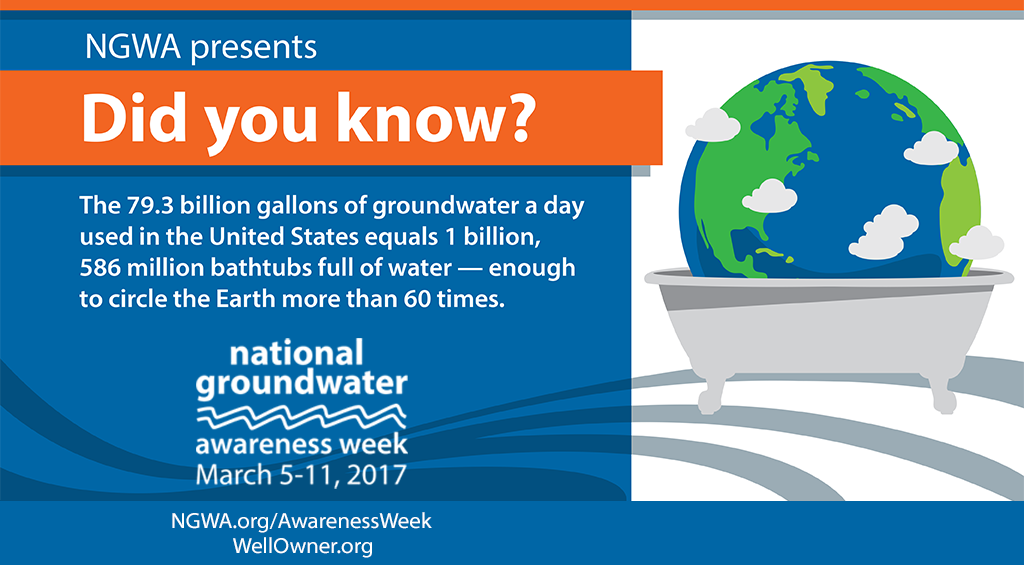
CONROE, TX – March 6, 2017 – The Apollo 17 crew, from 28,000 miles away, took one of the most iconic photos in history on December 7, 1972. The image is known as “The Blue Marble,” a fitting name considering 71 percent of the Earth’s surface is covered by water. Yet, about 99 percent of all water on this planet isn’t suitable for human consumption. The remaining one percent comes almost entirely from one source—groundwater.
The Lone Star Groundwater Conservation District is one of many organizations around the country recognizing National Groundwater Awareness Week from March 5-11.
“This awareness week, led by the National Groundwater Association, is the perfect time to take a moment and contemplate just how significant our groundwater resources really are,” said James Ridgway, Jr., LSGCD education / public awareness coordinator. “It’s also a great time for parents and educators to engage our younger generations on the subject.”
Ridgway said, according to a report from the American Geosciences Institute, there is a projected shortage of 135,000 geoscientists expected by 2025.
“The water scientists of tomorrow are being cultivated right now.”
Groundwater Basics:
Groundwater is the water that soaks into the soil from rain or other precipitation and moves downward to fill cracks and other openings in beds of rocks and sand. It is, therefore, a renewable resource, although renewal rates vary greatly according to environmental conditions.
Fortunately, groundwater is under most of the Earth’s surface. For instance, there is an estimated 660,000 cubic kilometers of water under the Sahara Desert, twenty times more water than in all of Africa’s Lakes. Groundwater is also the world’s most extracted raw material with withdrawal rates currently in the estimated range of 259 trillion gallons per year, according to NGWA.
About 60 percent of groundwater withdrawn worldwide is used for agriculture; the rest is almost equally divided between the domestic and industrial sectors.
The United States uses 79.3 billion gallons of groundwater a day, according to NGWA. That’s equivalent to about 1.5 million baths, enough bathtubs full of water to circle the Earth more than 60 times
A 2014 report from the U.S. Geological Survey states that, of the total U.S. groundwater supply, public supply accounts for 20.7 percent, individual households account for 4.66 percent, irrigation accounts for 65.1 percent, livestock/aquaculture accounts for 3.97 percent, industrial accounts for 3.82 percent, and mining accounts for 1.47 percent.
NGWA also estimates that groundwater feeds nearly 500 billion gallons of water into U.S. lakes and streams. It’s estimated by the USGS that about 30 percent of U.S. streamflow is from groundwater, although it is higher in some locations and less in others.
Approximately 500,000 new residential wells are constructed annually, according to NGWA estimates. The construction of these vitally needed water supply systems involves the use of more than 18,460 drilling machines by an estimated 8,085 groundwater contracting firms.
A Farm and Ranch Irrigation Survey from the U.S. Department of Agriculture reports that irrigation accounts for the largest use of groundwater in the United States. Some 53.5 billion gallons of groundwater are used daily for agricultural irrigation from 407,923 wells. In 1900, the United States used only 2.2 billion gallons of groundwater daily for irrigation from 17,000 wells
Texas leads the nation in the number of irrigation wells with 77,389.
In Montgomery County, LSGCD’s most recent permitted pumpage records show that 23.2 billion gallons of groundwater were pumped in 2015.
To learn more about National Groundwater Awareness Week, visit NGWA.org. To learn more about LSGCD, visit LoneStarGCD.org.
